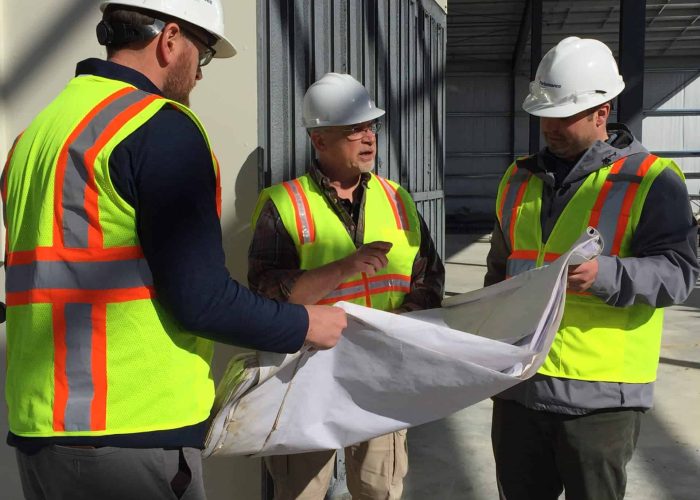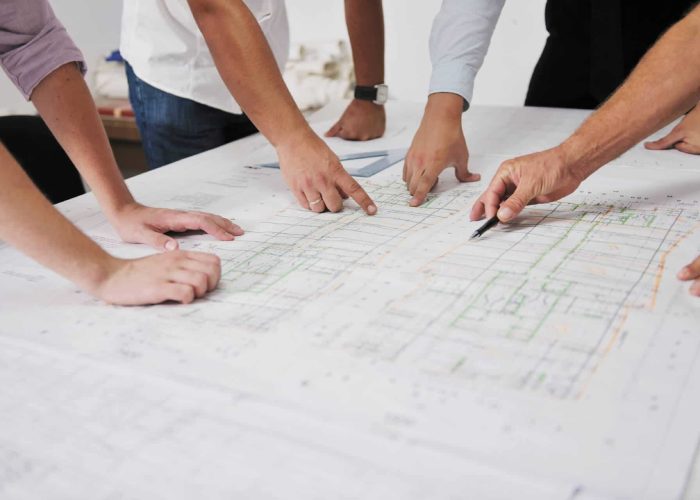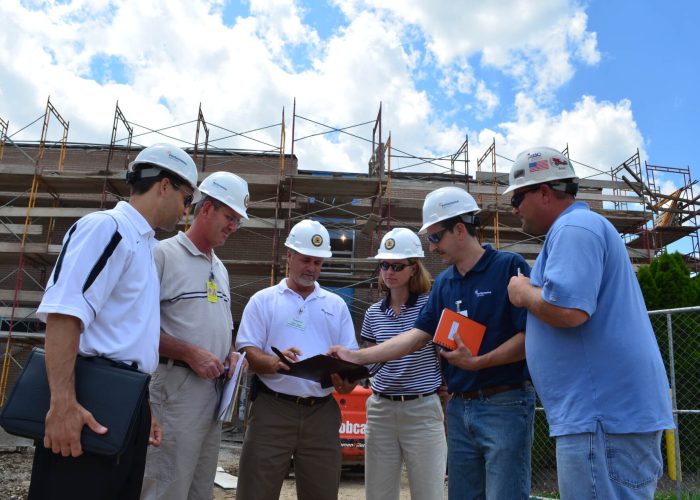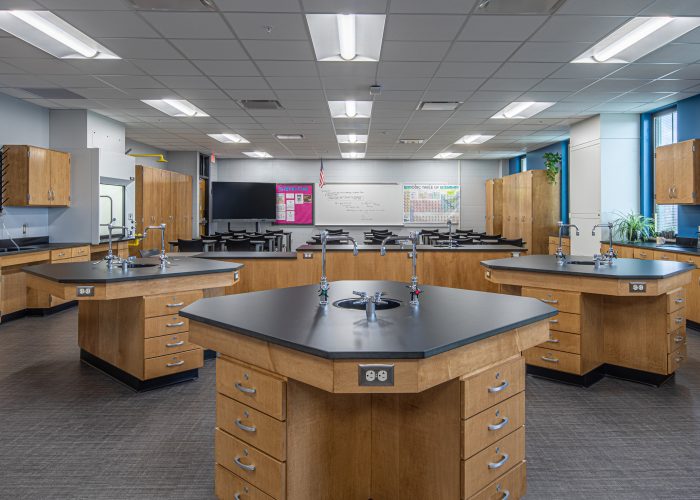In 2018, Tipton County, a community in north central Indiana, broke ground on one of the most significant County building projects since 1895. Like many communities around the nation, the County needed to replace an aging and overcrowded jail that no longer met their needs. After an unsuccessful attempt using the traditional Design-Bid-Build (DBB) project delivery method, Tipton chose to use the progressive design-build model to support their objectives and budget.
Progressive Design-Build (PDB) refers to the way a construction project design is developed by the Owner and the Design-Builder in a step-by-step process. According to the Design-Build Institute of America (DBIA), Progressive Design-Build allows the design and construction team to collaborate during the earliest stages of project development. This enables the greatest amount of engagement between the three key players in a construction contract: the owner, the designer, and the contractor. Here are five reasons why owners should consider the progressive design-build model for their projects.
1. One Contract – You Know Who to Hold Accountable Throughout the Life of the Project
In today’s market, a collaborative approach is necessary to be able to obtain fair pricing, maintain your budget, and finish the project on schedule. A progressive design-build contract is with one design-builder. The single-owner contract is a very important issue, mainly because of risk. It is also important because of the limited resources available in today’s construction environment, especially subcontractors. With just one contract, the design-builder assumes the risk for the project. There is no question about who is responsible when things go wrong because there is just one entity. Risks for increased costs due to change orders or construction delays are eliminated because risks are assumed by the design-builder with sole accountability for the project. Contracting with a single entity rather than multiple direct owner contracts prevents owner aggravation because there can be no “finger-pointing” on a project.
Ironically, design-bid-build contractors challenge the sole accountability approach. They call it “the fox watching the hen house” since there are no separate architect and construction manager contracts. To counter this claim at Tipton County, Performance Services, as the design-builder, hired a new site superintendent specifically for the Tipton County Jail project. The plan was then for the County to hire him, after construction was complete as the maintenance supervisor for the new facility. During construction, he saw every pipe that was run and every bolt that was installed. This creative approach provided the new maintenance supervisor with a thorough knowledge and understanding of the building systems and assured a smooth ongoing operation of the facility.
2. Owner Control – You Control the Budget at Every Step
I have worked on jail projects using all four main delivery methods, including Design-Bid-Build (DBB) General Contractor, Construction Manager as Agent, Construction as Constructor, and Progressive Design-Build. I have even worked using all four methods at the same time! One critical area owners always want control over is their budget. There is nothing worse than getting to bid day (I call it “surprise day”) and finding that you have multiple bids above your budget. Design-build gives the owner a high degree of control over the design and, in turn, budget.
The biggest pet peeve for owners is unexpected change orders. With progressive design-build, there are no change orders within the agreed-upon scope of work after the contract. This is because sub-contractors, as design-assist partners, are at the design table. My first-hand experience with other delivery methods is that contractors will look for opportunities for change orders due to the money they left on the table on bid day, but you do not have that environment with progressive design-build. The owner has control over their initial budget and final budget.
Tipton understood what they got with their building and why. I believe this understanding of their project is due to the collaborative and early engagement provided by the progressive design-build delivery method. A comment made by the Tipton County Jail Commander illustrates this. When he compared the previous design-bid-build failed project attempt, he felt he was “along for the ride,” but with the progressive design-build project, he was “in control of the ride.” The Tipton Jail Commander got the functionality and features he needed with the new facility.
Frequently Asked Question: How Does Construction Manager At-Risk Differ from Design-Build?
3. You Are a KEY Collaborator – It’s YOUR Project, So Your Input is Sought Throughout the Design Phase
In addition to owner control, collaboration is the key to the progressive design-build process. Everyone is “singing off the same sheet of music,” so to speak. You develop respectful relationships. I have learned throughout my career that constructing a building is truly a team effort. It requires a high level of teamwork to be successful. At Tipton County, we had a convenient meeting place for the team at the Tipton County Foundation Building and met weekly. Meeting face-to-face created an environment where everyone felt like they were part of a team they could trust.
We also used a charrette design approach. This helped to expedite the design process and developed several design options. As often happens in the traditional approach, we did not use the previous design to begin with or a computer-generated design option because these do not allow for team interaction. Instead, we began by using simple colored building blocks representing various building components. The team could move the blocks around and physically demonstrate to the team why a component should be located where it is.
Low tech was the most productive approach because there were no barriers to engaging in the brainstorming sessions. This was one of the reasons we came to design decisions so quickly. Brainstorming together and offering design ideas helped build the team. The design process established relationships that provided a lasting benefit which extended throughout the rest of the project.
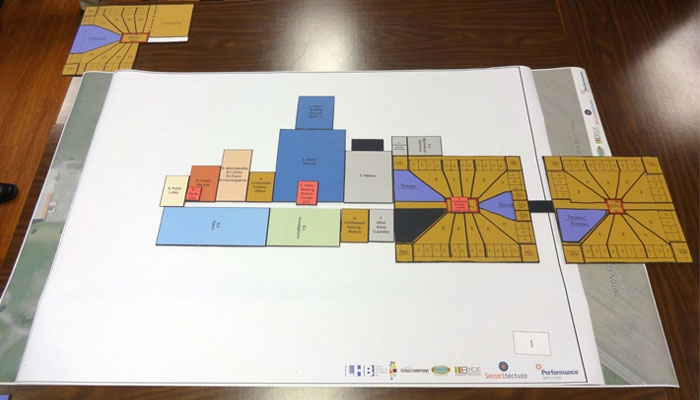
The budget was first and foremost on everyone’s mind. When challenged, people became creative and offered solutions to meet the operational needs. Subcontractors were at the table from the very beginning. This helped the designers find new ways to simplify and detail the design to reduce costs. The cost impact of design decisions was known immediately because the design and construction team was in the room, and this saved a great deal of time. Although there were times when the owner did not get everything they wanted, the collaborative approach allowed us to work through it together.
- Eight classifications instead of three
- A mental health cell block
- 84-bed general population
- A 32-ft direct line of sight from the control room to the intake counter
- Indoor and outdoor recreation under the roof
- Master plan for future expansion
With the progressive design-build design-to-budget process, we were able to design from the ground up to help Tipton County get what they were looking for within the available budget.
4. Faster Decision Making – Your Project Can be Completed Faster Than Traditional Delivery Methods
One of the benefits of the progressive design-build model is that you can expedite parts of the project due to having ONE entity working for and making decisions with the owner. Starting from scratch, we designed the entire building and began construction in just four and a half months. The process lends itself to expediency.
For example, the design used a pre-engineered metal building. It was a quality but less expensive option that allowed the County to meet its needs and put money into security-related features. Having the modular steel cell provider on board early also allowed us to expedite bidding, submittal, and fabrication so they could be delivered without delays. As a result, our production date was established early. Locking in a production date early on saved us several months of lead time and eliminated probable market inflation. Trade contractors were at the table during team decisions. Therefore, they knew immediately how to move forward. The fast decision-making process also allowed us to get under the roof quickly and in time for winter weather.
5. Superior Outcomes – Owner Control Ensures the Design Meets Your Expectations
People were amazed as they walked through the facility at the ribbon cutting and dedication, remarking that it did not look like a jail. It was clear that quality was the primary goal of the project. Even during construction, visiting designers and contractors commented that the workmanship of plumbing, duct work, and electrical on the back of the modular cells looked like artwork.

One of the challenges correctional facilities face today is separating inmates into appropriate classifications. When going through the original design-bid-build process, the owner was left with only 3 classifications. We were able to deliver 8 classifications, including a mental health unit that was not originally in the program.
In some cases, the owner was very specific about what they wanted to ensure a quality outcome. For example, they chose a known vendor for good reasons, such as ongoing service and reduced maintenance. The owner got to choose between various manufacturers to select what they felt was in their best interest. Because of progressive design-build, the owner got a higher level of security, more classifications, and a mental health unit all within the budget.
When an owner can pick their team, they can focus on quality rather than the lowest price. With the progressive design-build process, I believe we got a high-quality outcome at a fair price. Additionally, it was clear that the people who worked on the project had a lot of pride in their work. The Tipton County Sheriff’s Office and Corrections Center now serves as the community gateway, and it does not look like a jail.
Interested in learning more about this innovative project? Listen to our podcast, Big County Jail on a Small County Budget, to hear from Tipton County’s Sheriff, Tony Frawley, award-winning Architect Joe Mrak, and Performance Services about how progressive design-build was crucial to the project’s success.
The progressive design-build process has been very smooth and interactive. The communication and working relationship with Performance Services has been excellent. I’m confident that we have a design that meets all our program needs, is innovative, highly efficient, within our budget, and will reduce ongoing operating costs.
Tipton County Sheriff, Tipton County
Guest Author:

Joseph Mrak, AIA, LEED AP, CPTED, NCARB is a nationally recognized architect, pioneer, and leader in criminal justice, public safety, and homeland security design innovations. Having served as lead architect on more than 250 justice and public safety design projects to date, Joe has established a strong reputation as a leading authority in the Midwest and Southeast on criminal justice and public safety facilities planning and design. His familiarity with the key issues in corrections, justice, and public safety planning and architecture have led to numerous award-winning, innovative solutions that are the new standard for facilities design.
President/Principal Architect, Securitecture
Ready to start building with us? Our integrated team of architects, engineers, and construction management professionals is ready to help with your next project. Contact us today to ensure your next new construction or renovation project meets your expectations.
Hear From Satisfied Clients.


